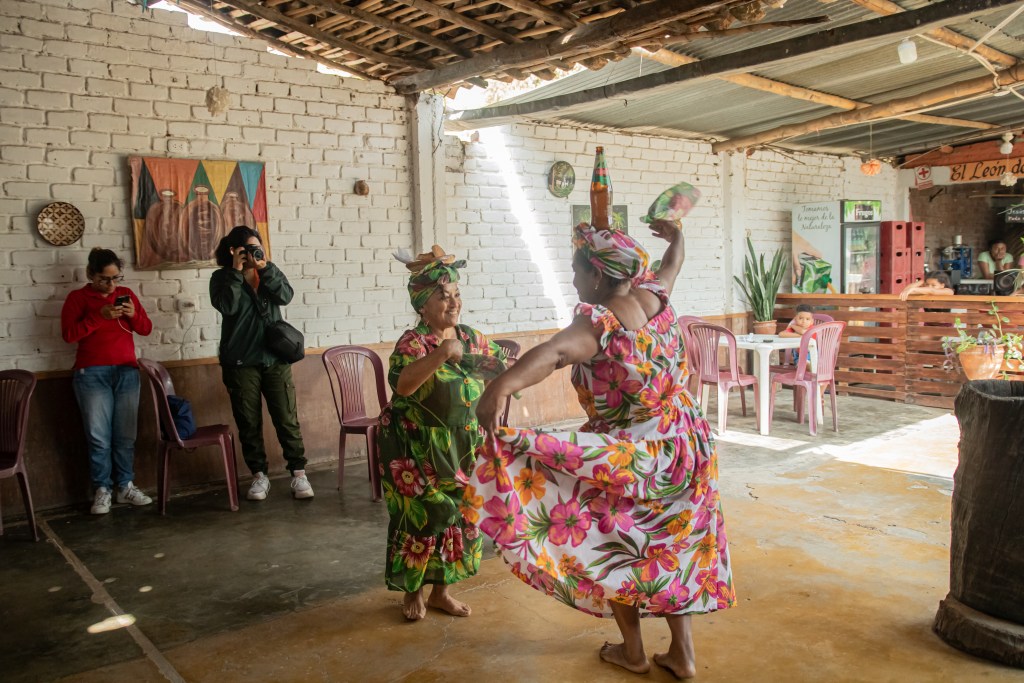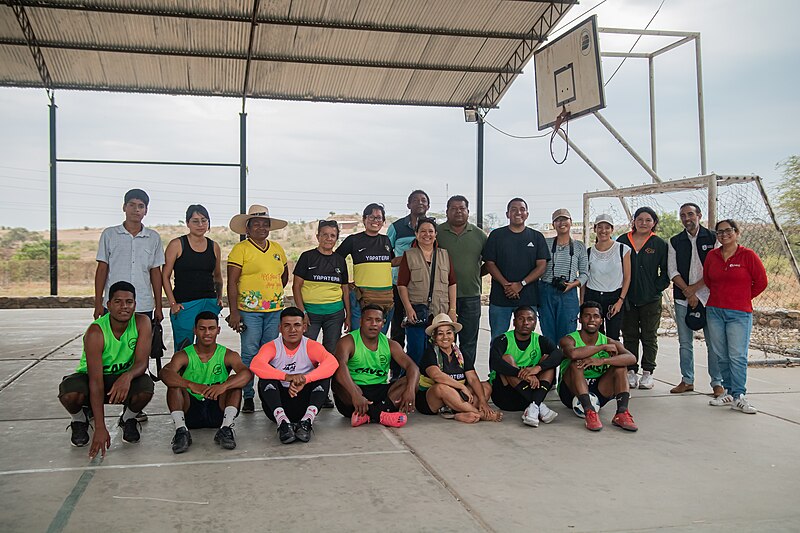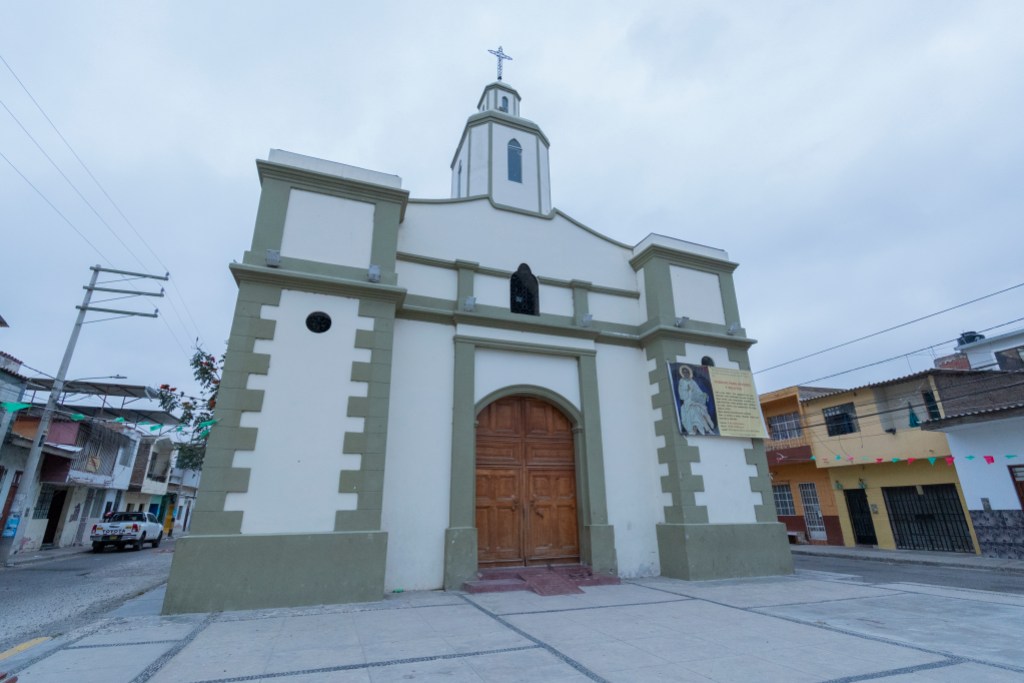
As part of our efforts to preserve and promote the cultural and environmental heritage of Yapatera, a village in the Chulucanas district, Province of Morropón, Piura, we hosted an impressive photo walk and mass upload to Wikimedia Commons, on December 9 and 10, 2023.
Our goal was to document Yapatera’s heritage (cultural landscape), including biodiversity, rural life and Afriodescendant culture. This was all organized by the Tourism specialist and consultant Samanta Calle, as part of her doctoral thesis on Cultural Tourism and Development, which she has been developing in the small towns of Cruz Pampa – Yapatera since 2022.
Challenges and cultural treasures
The towns of Cruz Pampa – Yapatera stand as a cultural and agricultural treasure, producing highlighted crops such as rice, limes, and mangoes, among others, as well as raising cattle: sheep, cows and pigs. This community lives and breathes life and tradition.
It is, however, not without its challenges. Problems arising from inadequate environmental management such as deforestation, mismanagement of solid waste and public health issues, affect the population’s well-being. Cruz Pampa has about 900 homes, many of which still lack adequate plumbing, and solid waste removal is still a persistent issue.
Cruz Pampa – Yapatera is a melting pot of Afro-descendant culture, it being home to the largest Afro-descendant population of Perú and of Piura. Here we see living practices of oral traditions such as cumanana, a practice of friends reciting verses in a contest-like manner, declared to be part of the nation’s cultural heritage. Among these living practitioners of the cumanana we can mention “El Gordo [Fat] Guardado”, Noemi Cornejo, Isidoro “Flaco [Skinny] García”, and Fernando Barranzuela, among others. Here, we also see dances such as baile tierra or golpe tierra, tondero and the Afroyapateran language.
This community is also home to touristic treasures such as the bathing pools of the La Pilca rivers, Yapatera Hill, ceramics by master artist Carlos Zapata and the mango festival celebrated every January. There’s the former Sugar factory—industrial heritage from the age of large plantations and slavery—which is expected to be formally proclaimed as National heritage soon.
In spite of its cultural and environmental importance in the Chulucanas and High Piura region, the community of Cruz Pampa-Yapatera faces challenges such as land invasion, putting their future plans and rooted cultural values at risk.

Community involvement
The december photo walk was designed by Samanta Calle, along with the local population. They called for people in the neighborhood who wished to become hosts on the photo walk, and they selected people with expertise and previous experiences in showcasing their cultural manifestations and hosting visitors, while also incorporating people new to these activities.
After that, Samanta Calle designed preliminary contents for the community to discuss and decide, from their own perspective, what to present in which activities during every stage of the walk. This is how they arrived at the decision to incorporate both of the main sectors of the town(Cruz Pampa and La Hacienda) as well as their cultural identity elements, as well as natural spaces. The end result was a photo walk in the form of a living tourist route ranging from dance, oral tradition, history, landmarks, architecture, gastronomy, and nature.This experience can still be offered by the Cruz-Pampa population, as well as local tourist operators, to new visitors; creating a new income source for the population.
As for the participants of the photo walk itself, they were selected based on an interdisciplinary approach. Fifteen people were selected—students, lecturers or staff at the National University of Frontera, members in local civil societies and collectives such as Peru Women Birders Piura, Tallapoma de Sol y Luna, COLITUR Piura, Turismo Perú Norte, León de Yapatera, Takeras Criollo, El Palenque Association of Afroyapateran Artisans, CAYSA Sports Club, José Pintado Berru Middle School, Vivero Una Casa un Jardín, San Sebastián Religious Committee, Yapateran House of Culture, Cultural association of Afro-Peruvian Dances, Alma Yapaterana, El Fogón de la Abuela Chicherio La Petro de Julio, La parcela de Kike y Nino. There were also members of local public entities such as local staff from iperú and local government.
Cultural landscape route
Photo walk day 1: Saturday, December 9th
Visit to the Cruz del Norte Church Square. Located at the northern Piura neighborhood known as “la Mangachería” [colloquial name for a house for slaves], because here was where the first liberated slaves established themselves in 1846.
Visit to Loma de la Cruz (Hill of the Cross). Our first stop in Yapatera was the first erected cross that gave a name to Cruz Pampa. From here we took panoramic pictures and observed the most emblematic elements of the town and its cultural landscape. Recitation of comananas by Juan Manuel “El Gordo” [“Fat”] Guardado.
Recitation of cumananas, by Fernando Barranzuela Junior, and demonstration of the baile tierra dance at the “El León de Yapatera” restaurant. Hosts: Luzmila Carrasco, Lilian León, and Fernando Barranzuela Junior.
Liturgy at the Church of St. Sebastian. In honor of the town’s patrons: “Chabaquito” (St Sebastian) y “Señor de la Piedad” [“Lord of Piety”].
Visit to “Una casa, un jardín” [“One house, one garden”] greenhouses. Local entrepreneurship aiming to create more natural environments and beautification of the town. This is one of several projects already up and running.
Yapatera House of Culture. The House of Culture is defined as an inter-cultural museum. There we talked and shared in the knowledge of Afrodescendant peoples in the world, in Peru and in Yapatera. Hosts: Abel Alzamora and the Cultural Organization of Afro-Peruvian Dances.
Former Sugar Factory. This building has been recognized by the Afro-Peruvian Working Group at the Republic’s Congress as worthy of memory, history and Afro culture in order to know the history of the Yapatera Hacienda [Plantation-Estate].
Copús tasting. Typical regional dish of Piura, made with several kinds of meat, tubers and plantains, cooked while buried in a clay pot.
Carlos Zapata Ceramics Workshop. Practical demonstration of ceramics techniques, as well as how it represents elements of its local identity.
Friendly match with the CAYSA Sports Club. CAYSA is an acronym standing for Cooperativa Agraria de Yapatera S.A. [Agrarian Cooperative of Yapatera S.A.].
Dance demonstrations: marinera and tondero. Both kinds of dances have an Afro-cultural component in their development.
Photo walk day 2: Sunday, December 10th
Visit to La Pilca, a specific part of the Yapatera River where the people gather to bathe and swim. Its name comes from the large rocks carried by the river [“pirca” or “pilca” refers to a low wall made of rubble]. Local species of reeds and birds are easily found here.
We closed the tour with a visit to the Mausoleum to Fernando Barranzuela Zevallos. Don Fernando was a consummate decimista [composer of décimas], poet, songwriter, historian of Yapatera and writer. His son, Mr. Fernando Barranzuela, was a reciter and writer of cumamanas in a variety of types and themes, as well as writer looking to preserve the history of Yapatera.
After all was said and done, a total of 174 images about the Afro-Yapateran cultural heritage were uploaded to Wikimedia Commons. Moreover, we promoted the strengthening of the local photographer community, so that it engages and aims to promote the natural and cultural heritage of the Piura region.
In sum, this photo walk not only added to the documentation of the cultural and environmental heritage of Yapatera, but also served as an opportunity to raise awareness and empower the local community in their protection of their unique heritage. Every single picture helped strengthen the link between the Yapateran population and their valuable cultural heritage, creating thus a visual testament to their identity and history.
















Visit the Wikimedia Commons Category
Lede picture belongs to Elchirafoto CC-BY-SA-4.0
Get to know more about Cruz Pampa Yapatera in the following video

Can you help us translate this article?
In order for this article to reach as many people as possible we would like your help. Can you translate this article to get the message out?
Start translation
